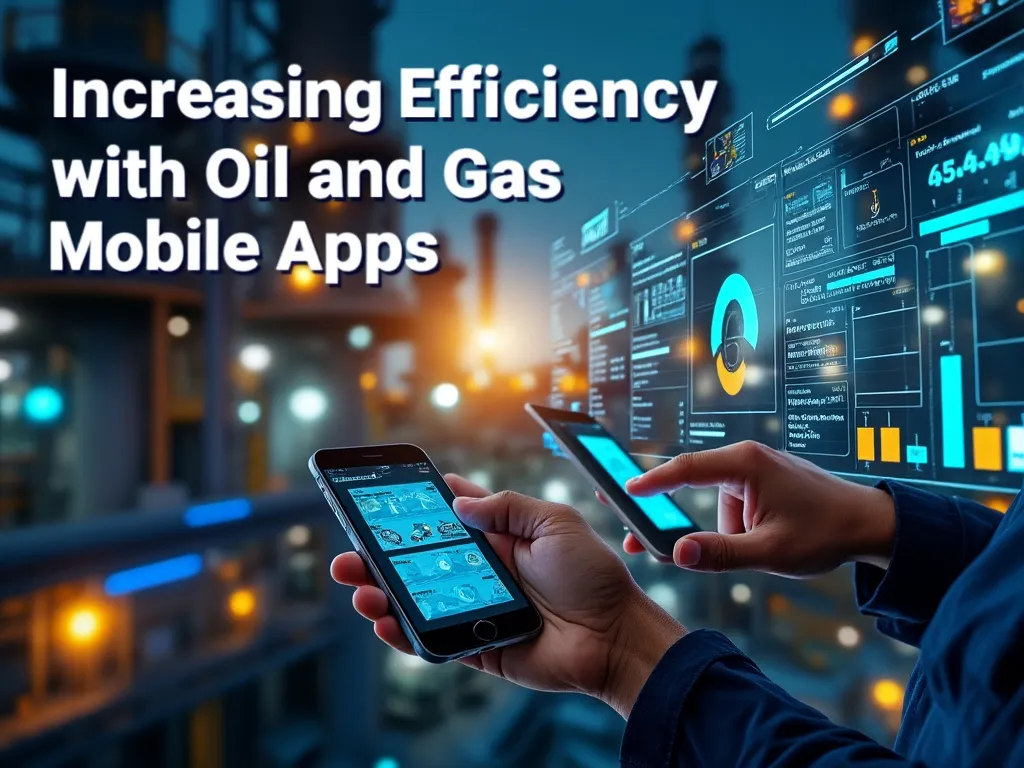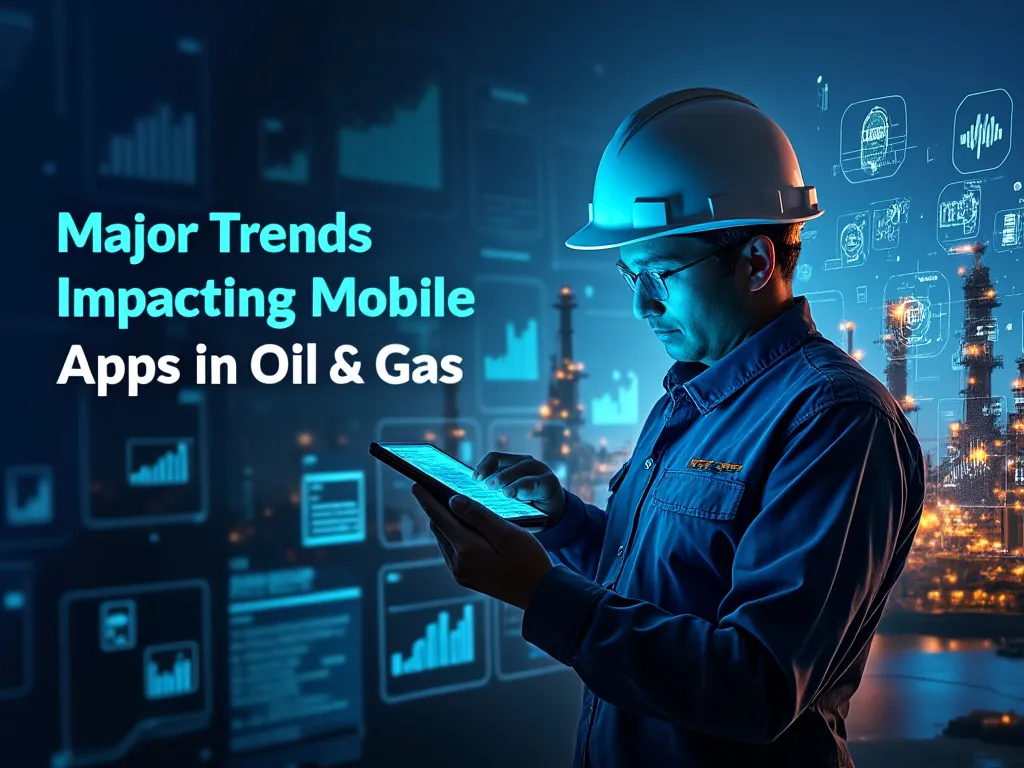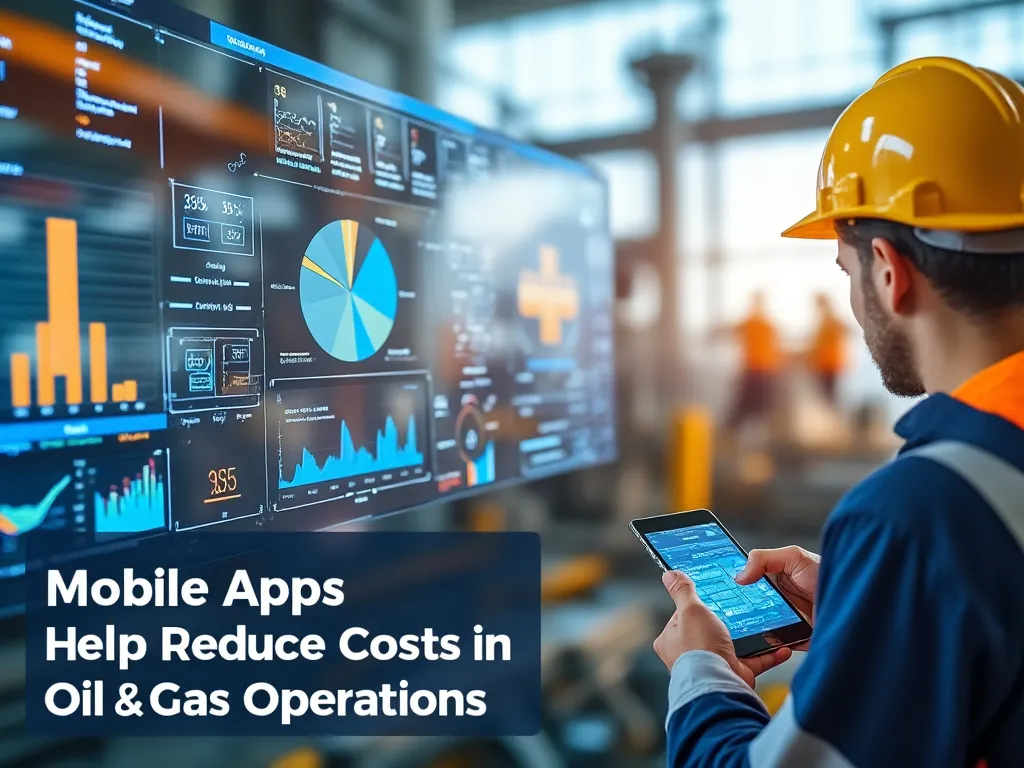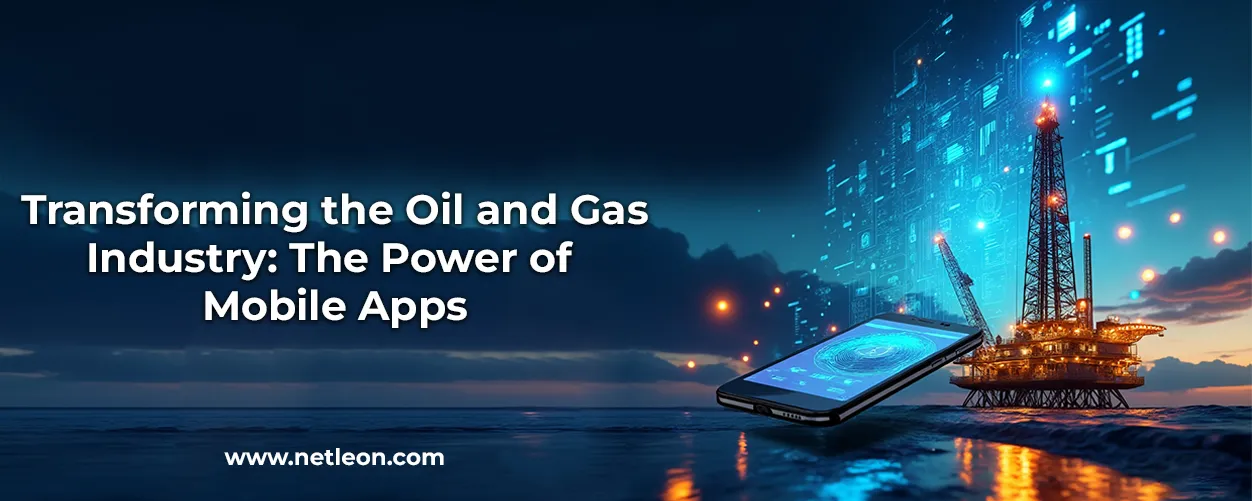Introduction
Traditional oil and gas operations have relied on legacy systems and complicated processes, but mobile applications are now transforming the industry. It is introducing efficiencies, safety, and the capacity to connect the field workforce directly to real-time data. Mobile app development has become an important part of the digital transformation of this sector. Here we examine the ways in which mobile applications transform the oil and gas sector- from increased productivity to reducing costs.
Oil & Gas Sector Mobile Applications: Their Importance
Mobile applications have become vital tools in the oil and gas industry. The applications facilitate professional monitoring of operations, gathering data, and collaboration outside. With real-time information being accessed through mobile, this increases operational efficiency with quicker, data-driven decisions. In areas that are quite remote, conventional solutions cannot offer the best and required services, so mobile applications present an answer to smooth communication and control. Moreover, in addition to this, companies, with mobile app development investments, enjoy smooth operations, higher compliance, and safety practices.
The demand for tailored mobile solutions has led to increased requirements for mobile app developers, especially in countries such as India. The relatively low cost of Android app development in India is attracting oil and gas companies looking for an economical way to develop mobile applications while maintaining high-quality standards.

Increasing Efficiency with Oil and Gas Mobile Apps
Mobile applications in oil and gas increase productivity by automating many tasks, reducing the opportunities for manual errors, and permitting the sharing of data in real time. With mobile apps, field engineers and operators can promptly capture maintenance issues, track their assets, and conduct direct inspections using their smartphones or tablets. This connectivity allows them to decide much faster and address issues as soon as they arise, reducing escalations.
Apart from the above, mobile applications increase coordination between field personnel and desk workers to ensure real-time conveyance of crucial information. Such measures decrease delays and increase coordination among different teams and subsequently raise overall productivity. The mobile application developed in the oil and gas sector could work harmoniously with existing IT systems, enhancing productivity across all aspects.

Major Trends Impacting Mobile Apps in Oil & Gas
Oil and gas is a really dynamic industry, and Artificial Intelligence, the Internet of Things, and cloud computing are driving it. Such technologies enable oil and gas firms to collect a huge amount of data on sensors and equipment through real-time sensing. Mobile applications analyze data and present it to operators for predictive maintenance, helping avoid shutdowns and maintain safety standards.
Another trend is in the rising significance of mobile development apps that can integrate with almost any type of device and system in the field. These integrations enable the creation of rich mobile solutions that can accomplish everything from monitoring equipment health to tracking the supply chain.
Types of Mobile Apps Used in Oil & Gas
Mobile apps in oil and gas can be categorized based on their functionality and application in various sectors of the industry:
- Field Data Collection Apps: Used by field engineers to collect data on equipment, well performance, and safety parameters.
- Asset Management Apps: Help track equipment usage, inventory levels, and maintenance schedules.
- Safety Compliance Apps: Designed to ensure safety standards are met by tracking incidents, safety drills, and regulatory compliance.
- Logistics and Fleet Management Apps: They assist in optimizing the transportation of materials and workers in remote locations.
- Real-Time Monitoring Apps: Real-time monitoring of drilling operations, pipeline status, and equipment performance is facilitated.
Developing mobile apps based on specific needs ensures better tracking, reporting, and communication at every stage of operation.

How Mobile Apps Help Reduce Costs in Oil and Gas Operations
Companies will reduce operational inefficiencies and downtime, which in turn helps with improving maintenance schedules. Real-time data collection will help identify problems at a stage before they become expensive to repair, not only saving labor costs but also equipment. Mobile apps also enhance the safety of workers and compliance with regulatory requirements, thus reducing the possibility of accidents and expensive fines. Companies save on travel and logistics costs because workers don’t need to be on-site for every task or inspection, as they can access critical information from anywhere.
For businesses that want to create customized mobile applications, the Android app-making cost in India provides an opportunity to develop high-quality solutions at a fraction of the price as compared to other regions, hence it is a smart choice for cost-conscious oil and gas companies.
Important Features of the Best Oilfield Mobile Applications
Effective oil and gas industry mobile applications would be one that offers an overall, friendly, and safe solution to customers. Off-the-top features for a selection should include:
- Offline Functionality: Given in many oil field operations; people often go further than accessible locations to reach such locations and stay there; this app will therefore require working properly even when a steady internet connection is not there.
- Real-time data integration: The capability of capturing real-time data from sensors, machinery, and field instruments involved in decision-making processes.
- Advanced Analytics: AI and machine learning will predict equipment failures, optimize routes, and analyze operational trends to improve efficiency.
- Robust Security: Oil and gas companies deal with sensitive data, so ensuring mobile apps have top-tier security protocols is vital.
- User-Friendly Interface: These applications should be user-friendly in nature, even for oilfield workers who have little or no technical experience.
With these attributes, oilfield mobile applications help ensure that the entire exploration, drilling, and production cycle runs smoothly and efficiently.
Conclusion
In this scenario, the competition will solely depend on how many companies invest in customized solutions. Whether developed as mobile applications or through a website development company by integrating mobile functionalities. Being affordable, android app-making costs in India can be an enticing opportunity for businesses. To create the latest in mobile applications without overspending.
FAQ
1. What is the advantage of using mobile applications in oil and gas operations?
Mobile applications increase efficiency and reduce downtime, improve safety, and provide real-time communication opportunities between field workers and management.
2. How do mobile applications reduce costs in oil and gas operations?
Mobile applications have reduced operational and labour costs by allowing streamlined processes, optimized maintenance schedules, and reduction of site visits.
3. Why is India considered to be a preferred destination for developing mobile apps?
India offers an affordable option for building excellent mobile applications. The cost to create an Android app in India is quite reasonable compared to many places; therefore, it is always chosen by companies that want to save on the cost of the development of the application.
4. What kind of features should I include in oil and gas mobile apps?
Look for apps with offline functionality, real-time data integration, advanced analytics, security features, and user-friendly interfaces.
Also Read: How to Shape Your Website Design Strategy For 2025
Pic credit by GROK
More Blogs You May Like
- Flutter Developer Salary Trends: Key Insights and In-Depth Analysis
- How to Started with Smart Contracts as a Blockchain Developer?
- Website Speed Optimization: Why It Matters for SEO and User Experience
- How to Implement Blockchain in Business? A Complete Guide
- Web Development Services in the USA
- How to Choose the Right Technology Stack for Your Web App
- Customizable Stock Screeners: How to Set Up and Use Them Effectively
- Mobile Application Development for Businesses – A Complete Guide
- Best Blockchain Development Company in India
- Best Companies for Full Stack Developers in India


